 W
WBronze is an alloy consisting primarily of copper, commonly with about 12–12.5% tin and often with the addition of other metals and sometimes non-metals or metalloids such as arsenic, phosphorus or silicon. These additions produce a range of alloys that may be harder than copper alone, or have other useful properties, such as strength, ductility, or machinability.
 W
WThe Alaca Höyük bronze standards are a series of bronze objects found among the grave goods in the princely tombs of Alaca Höyük. They are generally understood as cult instruments, probably to be attached to carts.
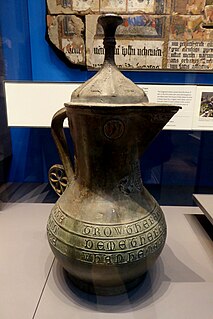 W
WThe Asante Ewer or Asante Jug is a leaded bronze lidded jug dated to the 1390s. It is a rare surviving example of an English bronze jug from the 14th century, with great significance for the study of bronze working in medieval England. It was looted as a spoil of war from Kumasi in Asante during the Fourth Anglo-Ashanti War in 1895, and since 1896 has been held by the British Museum in London.
 W
WThe Bronze baptismal font in the Hildesheim Cathedral is a late Romanesque baptismal font which was probably made in Hildesheim in the first third of the thirteenth century. It is noted for its pictorial decoration which is of the highest quality and for its perfect proportions and is considered among the most outstanding works of its type. For centuries the baptismal font stood in the western part of the nave, until it was moved to the last of the northern side-chapels in 1653. During the ongoing renovations of the cathedral (2010–2014) it is being displayed in the Bode Museum in Berlin. After the completion of the renovation work, it will be placed in the centre of the nave under the Hezilo chandelier.
 W
WThe Battersea Cauldron is a large bronze cooking vessel, dated to 800BC to 700BC. It is one of around 60 examples of similar Iron Age cauldrons found in Great Britain and Ireland.
 W
WThe Battersea Shield is one of the most significant pieces of ancient Celtic art found in Britain. It is a sheet bronze covering of a wooden shield decorated in La Tène style. The shield is on display in the British Museum, and a replica is housed in the Museum of London.
 W
WThe Benty Grange hanging bowl is a fragmentary Anglo-Saxon artefact from the seventh century AD. All that remains are two escutcheons; a third disintegrated soon after excavation, and no longer survives. The escutcheons were found in 1848 by the antiquary Thomas Bateman, while excavating a tumulus at the Benty Grange farm in western Derbyshire, and were undoubtedly buried as part of an entire hanging bowl. The grave had probably been looted by the time of Bateman's excavation, but still contained high-status objects suggestive of a richly furnished burial, including the hanging bowl and the Benty Grange helmet.
 W
WThe Biertan Donarium is a fourth-century Christian votive object found near the town of Biertan, in Transylvania, Romania.
 W
WThe Bobrinski Bucket, also called a kettle or cauldron, is a 12th-century bronze bucket originally manufactured for a merchant in Herat in 1163 out of bronze with copper and silver inlaid decorations. It provides one of the earliest examples of Persian anthropomorphic calligraphy. It is named after a former owner, Count Bobrinsky, and is now in the Hermitage Museum in Saint Petersburg.
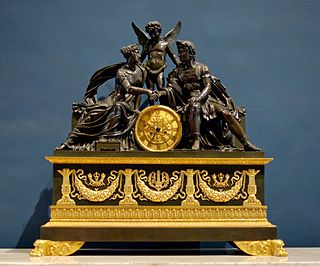 W
WA French Empire-style mantel clock is a type of elaborately decorated mantel clock that was made in France during the Napoleonic Empire (1804–1814/15). Timekeepers manufacturing during the Bourbon Restoration (1814/1815–1830) are also included within this art movement as they share similar subjects, decorative elements, shapes, and style.
 W
WThe Gilt-bronze Incense Burner of Baekje was designated as the 287th National Treasure of Korea on May 30, 1996. Currently housed at the Buyeo National Museum, it was originally excavated at an ancient temple site in Neungsan-ri, Buyeo County in Chungcheongnam-do in 1993. The incense burner was the largest find among the 450 artifacts excavated.
 W
WThe Gloucester Candlestick is an elaborately decorated English Romanesque gilt-bronze candlestick, now in the Victoria and Albert Museum in London. It was made for Gloucester Cathedral between 1104 and 1113, and is one of the outstanding survivals of English Romanesque metalwork.
 W
WHanging bowls are a distinctive type of artefact of the period between the end of Roman rule in Britain in c. 410 AD and the emergence of the Christian Anglo-Saxon kingdoms during the 7th century. The surviving examples have mostly been found in Anglo-Saxon graves, but there is general agreement that they reflect Celtic traditions of decoration.
 W
WThe Havor hoard is an Iron Age treasure found in 1961, in Hablingbo on the Swedish island of Gotland. It consists of a large gold torc, known as the Havor Ring, along with several well-preserved bronze objects and was buried inside a Roman bronze situla in the mound surrounding a hillfort.
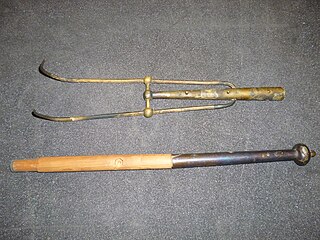 W
WThe Little Thetford flesh-hook is a late Bronze-Age artefact discovered in 1929 in Little Thetford, near Ely, Cambridgeshire, England. A flesh-hook is a metal hook with a long handle used to pull meat out of a pot or hides out of tan-pits. This particular find is one of 32 other such archaeologically significant finds, scatters, and excavations within 1 square mile (2.6 km2) of Little Thetford.
 W
WLuristan bronzes are small cast objects decorated with bronze sculpture from the Early Iron Age which have been found in large numbers in Lorestān Province and Kermanshah in western Iran. They include a great number of ornaments, tools, weapons, horse-fittings and a smaller number of vessels including situlae, and those found in recorded excavations are generally found in burials. The ethnicity of the people who created them remains unclear, though they may well have been Persian, possibly related to the modern Lur people who have given their name to the area. They probably date to between about 1000 and 650 BC.
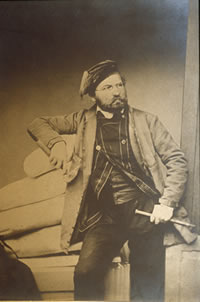 W
WFerdinand von Miller was a German artisan who is noted for his furtherance of bronze founding.
 W
WThe statuette of The Shouting Horseman was made by the sculptor Andrea Riccio (1470-1532). It is in the collection of the Victoria and Albert Museum in London.
 W
WSitula, from the Latin word for bucket or pail, is the term in archaeology and art history for a variety of elaborate bucket-shaped vessels from the Iron Age to the Middle Ages, usually with a handle at the top. All types may be highly decorated, most characteristically with reliefs in bands or friezes running round the vessel.
 W
WThe Tassilo Chalice is a bronze chalice, gilded with silver and gold, dating from the 8th century AD. The chalice is of Anglo-Saxon design, and has probably been at Kremsmünster Abbey, Austria since shortly after it was made.
 W
WThe Temple Pyx is a mid 12th century medieval bronze gilt plaque, suggested as German in origin. It is currently a part of the Burrell Collection in Glasgow, Scotland.
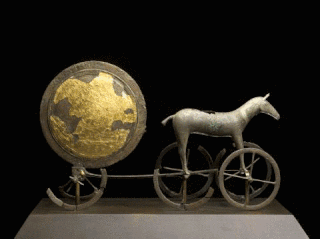 W
WThe Trundholm sun chariot, is a Nordic Bronze Age artifact discovered in Denmark. It is a representation of the sun chariot, a bronze statue of a horse and a large bronze disk, which are placed on a device with spoked wheels.
 W
WThe Vače Situla is an ornamented Early Iron Age ritual bronze vessel (situla) found in the second half of the 19th century at the Hallstatt Archaeological Site in Vače in central Slovenia. It counts among the highest-quality such vessels in general and among the most precious archeological artifacts of the country. Dating from the 5th century BC, it is considered to be one of the oldest situla objects of the northern Illyrians found in the Eastern Hallstatt zone. The vessel has three rows of relief that show the ordinary life of the ruling class and also reflect the religious understanding of the world in that time. It is on display in the National Museum of Slovenia.
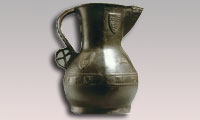 W
WThe Wenlok jug or Wenlock jug is a rare surviving example of an English bronze jug from the 15th century, with great significance for the study of bronze working in medieval England. Only two similar jugs are known in the UK. The Wenlok jug is the smallest of the three, but bears the earliest maker's mark for the English founder - possibly a bell founder - who cast it. The other examples are the Asante Ewer, which retains its lid and is held by the British Museum having been found at Kumasi in the Gold Coast in 1896 during the Anglo-Ashanti wars, and the Robinson jug, which was found in a farmhouse in Norfolk in the 1879 and is now in the collection of the Victoria & Albert Museum. All bear inscriptions in English and were made from leaded bronze, an alloy of copper, tin and lead, cast in a two-part mould in a similar manner using bronze spacers to separate the inner and outer moulds, with similar decorative motifs.